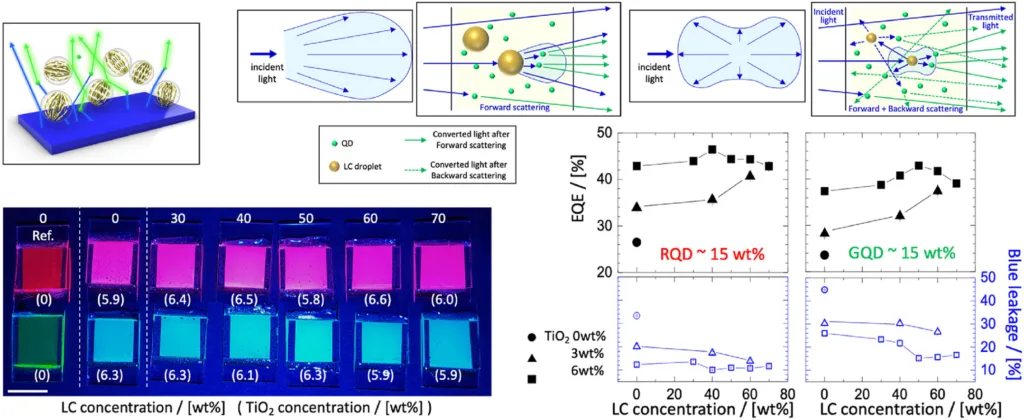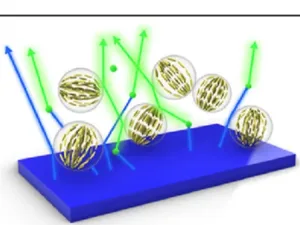Researchers in Korea have made strides in the development of quantum dot displays addressing two critical issues: enhancing external quantum efficiency (EQE) and minimizing blue light leakage, while ensuring manufacturability through inkjet printing remains seamless and efficient.

The crux of the research lies in the formulation of an organic-inorganic composite system, integrating QDs)with liquid crystal (LC), polymer, and titanium dioxide (TiO2) nanoparticles. This blend not only aims to boost the EQE of QD-OLEDs significantly—achieving an upsurge of up to 81.9% with 6 wt% TiO2—but also smartly mitigates one of the manufacturing challenges: the risk of nozzle clogging in inkjet printing processes.
Inkjet printing, a cornerstone technique for fabricating display components, demands the ink to flow consistently through fine nozzles for high-precision patterning. However, inks containing solid particles like QDs or TiO2 nanoparticles are susceptible to clogging these nozzles if the particles aggregate or if the viscosity is improperly balanced. This research presents a meticulous approach to incorporate TiO2 nanoparticles into the mix in a way that prevents aggregation, ensuring smooth ink flow. By maintaining a well-dispersed and stable nanoparticle mix, the team has not only elevated the performance of QD-OLEDs but also navigated around the potential bottleneck of nozzle blockages, which are a critical hurdle in scaling up manufacturing processes.
The paper delves into enhancing color conversion efficiency in commercial displays, leveraging the unique properties of QDs and the strategic use of composite materials to optimize light conversion while addressing the leakage of unconverted blue light. This approach not only ensures vivid and rich color output but also eliminates the need for additional fabrication steps and materials, such as color filters, that would otherwise increase complexity and cost.
Reference
Kim, M., Lee, D., Jung, H., & Lee, S. H. (2024). Superior photoluminescence of quantum dot displays via organic-inorganic composite scatterers. Composites Part B: Engineering, 111425. https://doi.org/10.1016/j.compositesb.2024.111425

